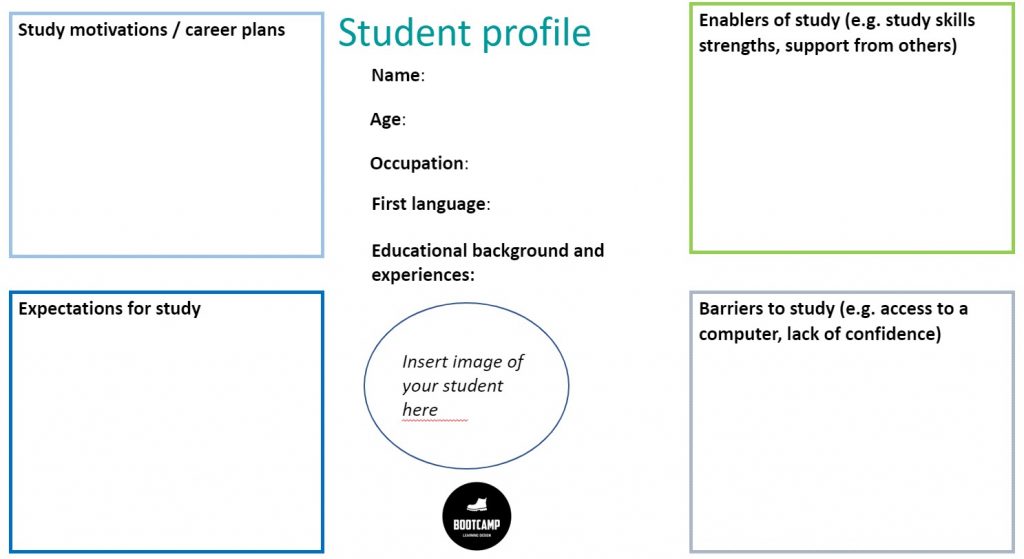In this week’s bootcamp session we used a couple of techniques to put students at the heart of design.
The first was a “Student Profile” in which we imagined a “typical student” and noted motivations, expectations, enablers and barriers to study, alongside their educational background and experiences.

In UX domains these might be called personas becoming the foundations of user stories, keeping users at the centre of design. I was introduced to the idea a while back and have found personas really helpful in curriculum design projects to date, particularly when thinking about vision, values and teaching methods.
We might suggest coming up with a few different personas – maybe an international student, a home student, one with some access needs. The personas can be informed by student feedback, real students, NSS feedback etc – and these imaginary people can be “walked through the design”. Although imaginary, our personas can take on a life of their own — when we were designing HSS8002 we asked questions like “which options would George take?”
We can also use personas to design from the future, by imagining graduates, say three years post-graduation. What did they most value about their programme? What job are they doing? What were the most valuable skills they picked up? What would they like to have seen more of? We can talk to alumni, and employers to flesh these out alongside attributes in our own graduate framework. We can use these insights to prioritise objectives and teaching approaches.
Our second activity involved thinking about the student journey. In our case, the journey through a module – What concerns or difficulties did we envisage students having at certain points? What could we build in at those times to mitigate? This is a really useful exercise to do once the module concept is fixed.
